Cast iron is widely used in industries such as construction, machine tools, or automotive due to its positive mechanical properties. The positive properties are achieved by the addition of carbon, but it causes specific issues.
The carbon addition makes welds brittle, sensitive to heat, and prone to cracking, so even if you do everything right, you still might fail.
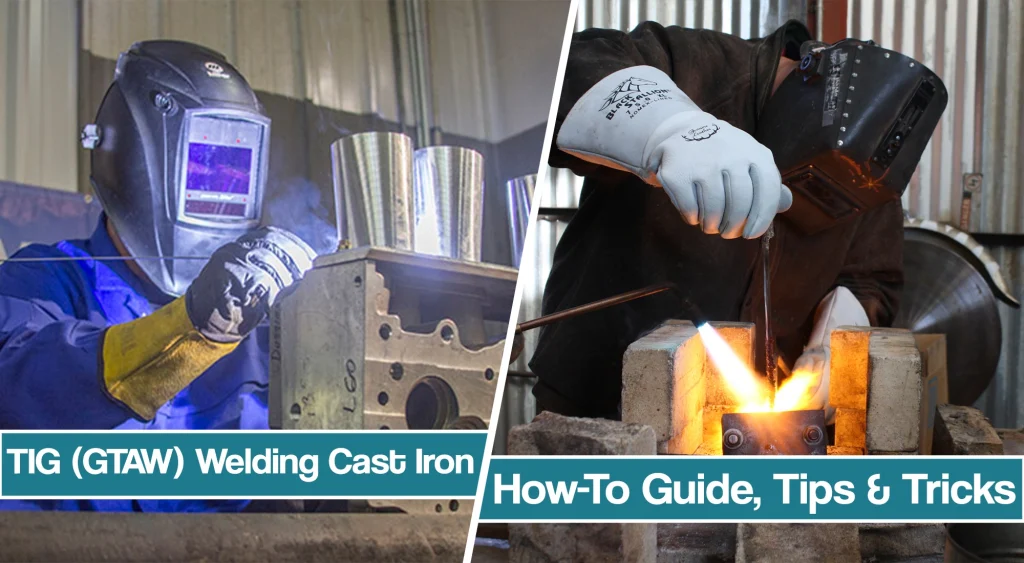
However, our detailed guide on how to TIG weld cast iron will help you understand the issues in order to increase the odds of your successful weld.
What Is Cast Iron And Where Is It Used?
Cast iron is a ferrous metal composed primarily of iron, with a carbon content of 1-3%. It is a strong, hard, and brittle material that is formed through the process of smelting iron ore in a blast furnace.
The high carbon content results in a low melting point, but it makes cast iron suitable for applications where strength and durability are important. However, besides advantages, carbon migration makes welding hard.
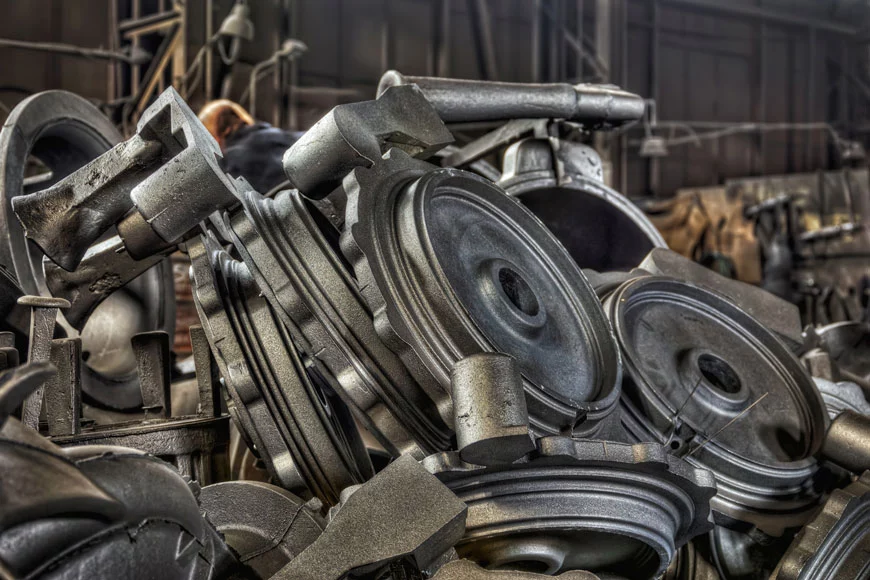
Cast iron is used in a variety of industries, including construction, automotive, and machine tools. In construction, cast iron is often used to create structural components such as columns and beams. In the automotive industry, it is commonly used to make engine blocks, gears, and other components. It is also used in crankshafts, spindles, and other machine parts.
Why Is Cast Iron Challenging To Weld With Common chances of success at around 50%
Cast iron is one of the most challenging materials to weld due to its properties and content. It contains high levels of carbon, which makes it more brittle, so cast iron welding is sometimes a nightmare. The high carbon content also makes it prone to cracking and warping. Additionally, cast iron is highly sensitive to heat. Too much heat can cause the material to expand, which can weaken the weld and develop cracks alongside the weld bead.
Additionally, adding sulfur and other impurities during the molding process can interfere with the weld strength of cast iron. It can lead to brittleness and hot cracking in the weld, as well as in the base metal. This is because sulfur reacts with the molten weld pool and forms sulfur-iron compounds, which can have detrimental effects on the weld strength. Furthermore, the presence of sulfur and other filth in the weld pool can cause porosity and pinholes, further diminishing weld strength.
TIG Welding Cast Iron
TIG welding is an exact process that is ideal for welding materials like cast iron. It provides a high level of control over the weld puddle, which is important when dealing with the temperature issues of cast iron. Furthermore, TIG welding offers better control over the heat input, which is essential for preventing the warping and cracking of the cast iron. Additionally, TIG welding is a clean process that produces minimal spatter and slag, resulting in a higher quality weld.
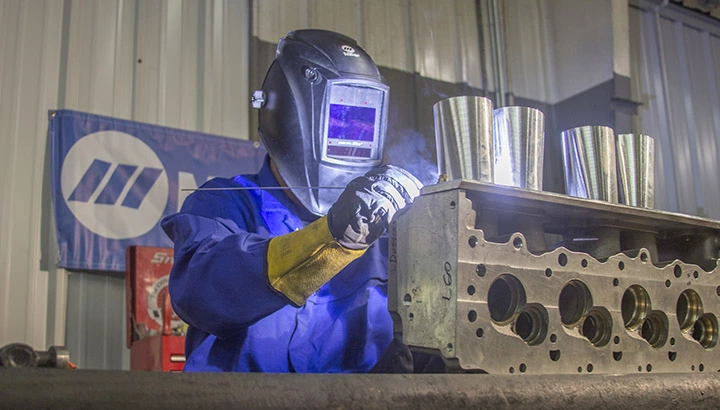
Despite these advantages, TIG welding has some drawbacks when used to weld cast iron. First, it requires a higher level of skill than other welding methods. This is because you must be very precise when controlling the weld puddle and the heat input. Second, TIG welding is more expensive than other welding methods. This is due to the cost of the equipment, argon and helium gas and other consumables required for the process.
How To TIG Weld Cast Iron
In order to successfully weld cast iron, the welder must have the right equipment and technique. The TIG welder should have a moderate amperage of 100-150 amps, and the welding process must be done slowly and carefully to prevent the base metal from becoming too hot.
A 2 percent thoriated tungsten, also known as red tungsten, is a go-to choice, and filler rod for TIG welding cast iron is an alloy of nickel and iron, such as Ni-Fe (55% nickel rods or Ni55) or NiFe-CI (99% nickel rods or Ni99). The recommended pre-heat temperature is a minimum of 300° F and approximately 500°F for medium-thick parts.
However, even if you do everything right, TIG welding cast iron is usually a 50/50 process. As a result, there is no guarantee that you will succeed. However, our step-by-step guide will make sure you done everything right on your side.
Identifying the Type of Cast Iron
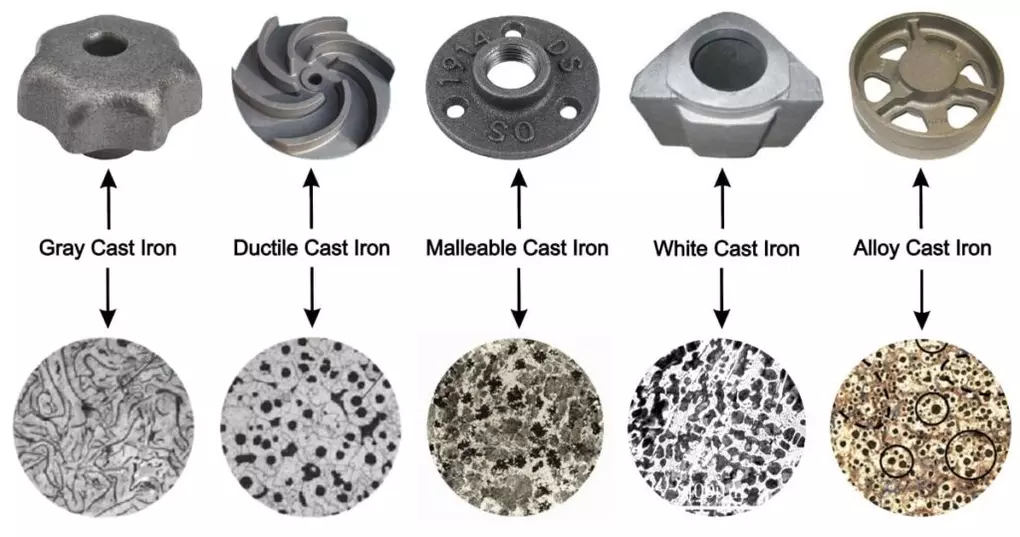
Before you even start considering to weld cast iron, you should know that depending on the type of cast iron, some types can be welded with relative ease, while others may not be suitable for welding. Gray cast iron is the most common type of cast iron and it is usually weldable with TIG welding. Gray cast iron is composed of graphite flakes in a matrix of ferrite or pearlite, making it a relatively soft and ductile material.
White cast iron, on the other hand, is not suitable for welding. This type of cast iron is composed of a hard and extremely brittle material called cementite. Other types of cast iron, such as malleable cast iron and ductile cast iron, can also be welded.
Malleable iron has a higher carbon content than gray cast iron, and it must be pre-heated and post-weld heat treated when weld cools in order to be successfully welded. Ductile cast iron be welded without pre-heating or post-weld heat treatment, but it is more difficult to weld than gray cast iron. Knowing the exact type is difficult without detailed metallurgical analysis, so make sure you contact the seller.
TIG Welder For Cast Iron
A TIG welder for TIG welding cast iron should have enough power to complete the welds, as well as features and controls to ensure a quality weld. The Miller Electric Manufacturing Company recommends a minimum of 150 amps to weld cast iron, but its common to see welders using at most 100 amps with cast iron welding with TIG. The goal is to get just enough heat to melt the filler rod without overheating the cast iron pieces to prevent cracking.
You can adjust the frequency of the arc, as well as the current, to create the best weld. This will help create the proper arc length and puddle size, as well as reduce spatter. Modern machine can introduce a pulse feature, which will allows you to adjust the pulse time, width, and frequency to create a smoother and more consistent weld. In addition, pulsing provides a heat control, which is essential in TIG welding cast iron.
The TIG torch or foot pedal are pretty similar to TIG steel welding, so you don’t need anything specific. You can opt for a remote amperage control in case you notice things hotter than expected.
What Is The Best Tungsten For Cast Iron?
The right tungsten electrode for TIG welding cast iron is typically 2 percent thoriated tungsten, also known as red tungsten. This type of tungsten has a higher level of thorium oxide added to it, which improves its electrical conductivity and allows it to stay cooler while welding. It also resists contamination better than other types of tungsten electrodes, making it ideal for welding cast iron.
The thorium oxide also helps to provide a more stable arc and reduce arc wander, which is important when welding with cast iron. Additionally, the higher electrical conductivity of red tungsten allows for higher welding amperage and more consistent temperatures, resulting in a better weld.
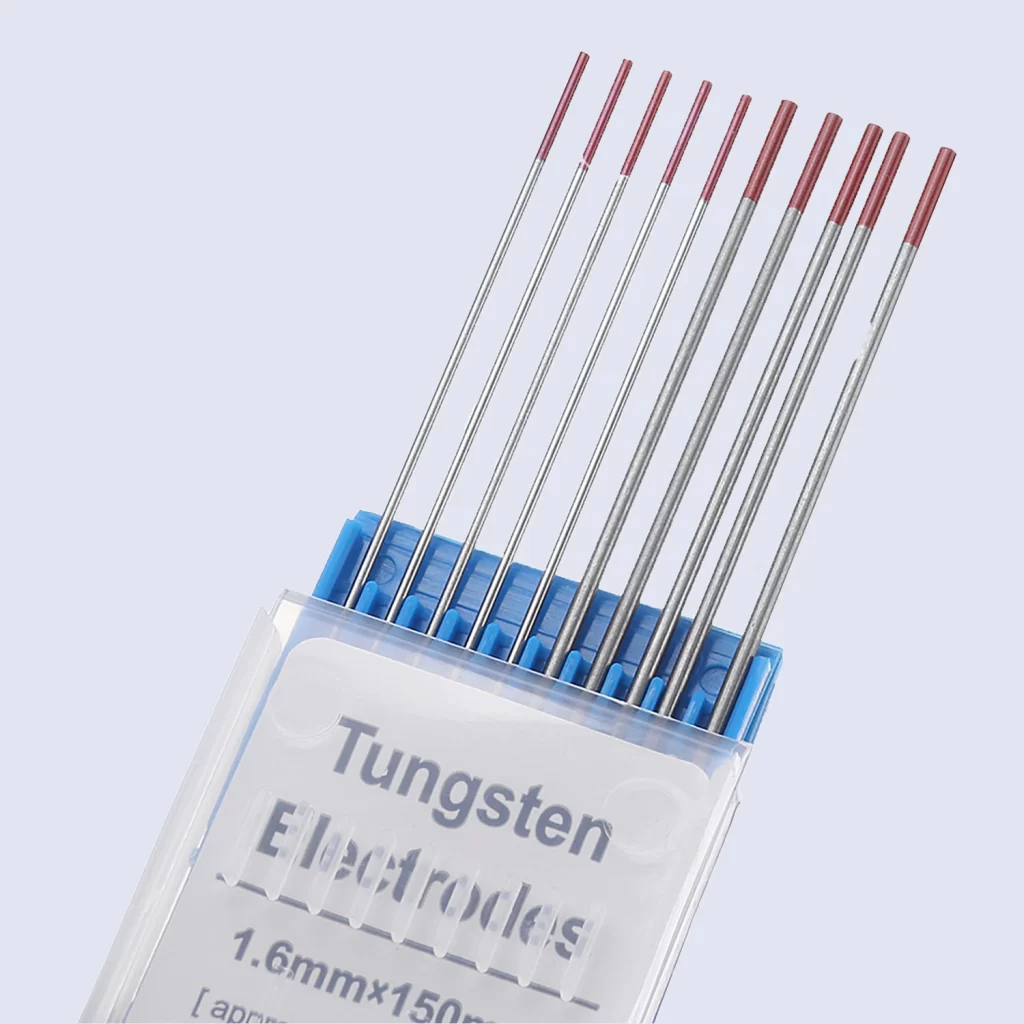
It is also important to note that the red tungsten electrode should be ground to a point, as this will provide a more focused and consistent arc. Important safety notes with using tungsten electrode with thorium oxide of cast iron TIG welding.
Thorium can be carcinogenic when inhaled or when it ends up in the mouth or digestive tract. So, you should be very careful when grinding its point, and you should have a good respirator or face protection.
TIG Welding Rods For Cast Iron
The right filler rod for TIG welding cast iron is an alloy of nickel and iron, such as Ni-Fe (55% nickel rods or Ni55) or NiFe-CI (99% nickel rods or Ni99). These rods are specifically formulated to provide excellent chemical and mechanical properties when used to weld cast iron. As an alternative, you should consider aluminum brass fillers.
Nickel and iron-based filler rods:
The ductile iron Ni-Fe rods are composed of 55% and additions and a small amount of carbon and silicon, which helps to create a strong, ductile weld. The NiFe-CI ferro-nickel rods are composed of 99% nickel, iron, and chromium and are often used to weld high-carbon cast irons, as they provide a higher weld strength and better corrosion resistance.
Both of these rods are designed to create a strong bond between the base metal and the weld without creating excessive heat or shrinkage.
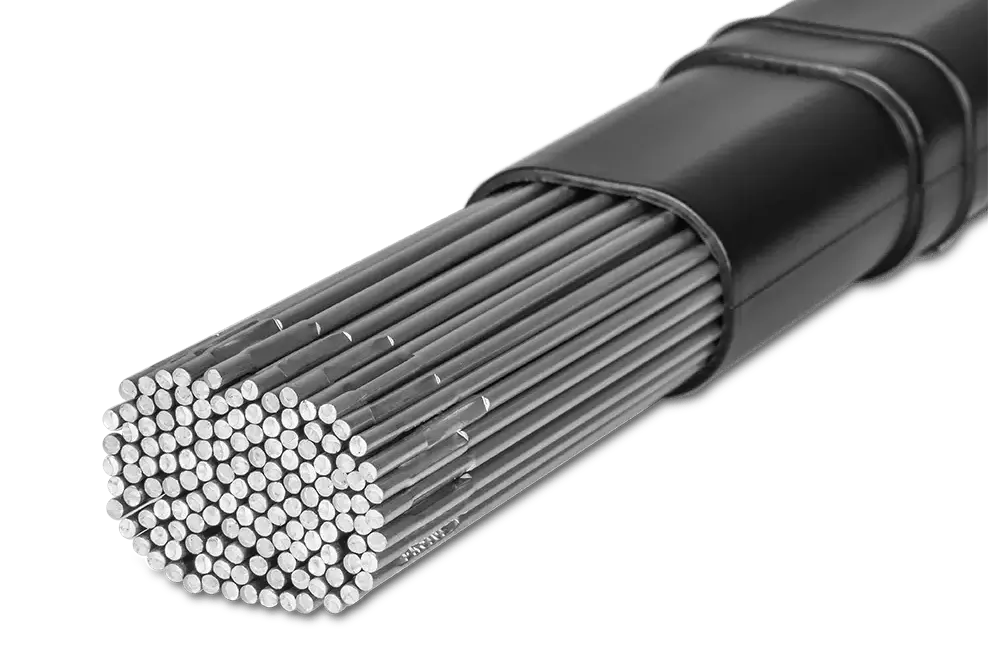
The rods also have high levels of impact toughness, which helps to reduce the risk of cracking and spalling in the weld. Furthermore, these rods are designed to be extremely resistant to corrosion and oxidation, which helps to ensure the quality and longevity of the weld.
Aluminum Brass-based Filler Rod:
Even do Ni-Fe TIG filler rods are recommended for cast iron TIG welding, if the cast iron part that you braze or weld Is not subjected to high contractions from heating and cooling or the stress on it is not great or it is nonextant, you can use filler welding rod with much less syringe stress tolerance that are aluminum brass based.
With your TIG welding machine set on AC current and with the aluminum brass rod, you will mix much less carbon and filth from the main metal intro you weld, and with the low current, you can get some decent results.
Cast Iron Welding Shielding Gas
The right shielding gas for TIG welding cast iron is argon or helium, as they are the most effective in providing the necessary protection from oxidation. The shielding gas must be able to form a protective layer around the weld zone to prevent oxidation. In addition, the shielding gas must provide enough heat to penetrate the cast iron.
Pure argon is the most common and cost-effective shielding gas for cast iron TIG welding. Helium is expensive, but it might be added for higher penetration when welding thicker pieces.
The flow rate should be between 15-25 cubic feet per hour (CFH). Higher flow rates can be used for critical applications when wind or draft are present. Still, in general applications, it can cause turbulence which sucks in atmospheric gases you are actually trying to get out of your weld zone.
Preparing The Weld
After you ensure you have the right tools for the job, it is time to prepare the weld and start welding.
When TIG welding cast iron, the right weld preparation is essential for achieving the desired results. The sole nature of TIG welding also requires crucially clean pieces.
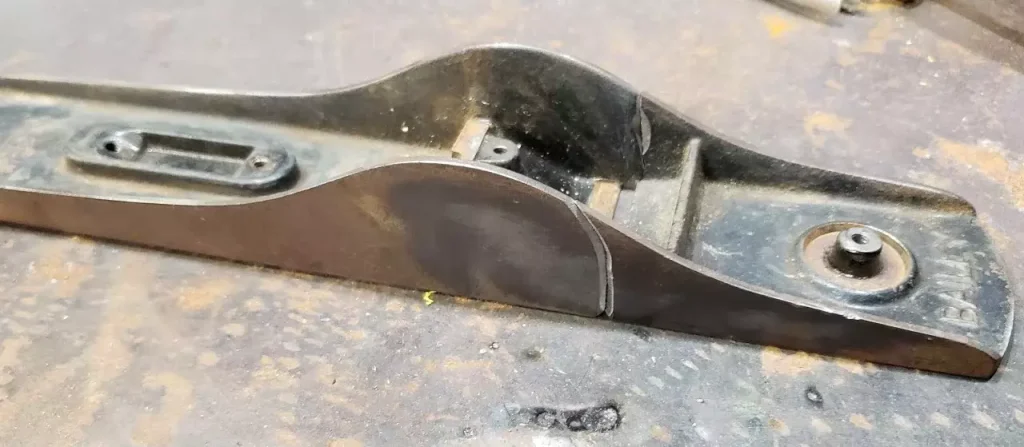
The surfaces to be welded and casting skin should be thoroughly cleaned to remove any dirt, rust, or other contaminants that could cause welding defects. A wire brush should be used to remove any surface scale or rust, and you can use an angle grinder. For deeper cleanings, a chemical descaling agent can be used.
The joint should be designed to ensure proper penetration of the weld and to minimize the risk of cracking. It is important to use a joint that has the correct geometry and is designed to accommodate the thickness of the material being welded. It is also important to use a preheat that is appropriate for the type of cast iron being welded.
Preheating The Cast Iron: How Much Should You Pre-heat Cast Iron Before Welding?
The recommended pre-heat temperature for TIG welding cast iron is a minimum of 300° F and approximately 500°F for medium-thick parts. Pre-heating is an important step in TIG welding cast iron as it helps to reduce the risk of cracking that occurs when you weld cold cast iron.
Pre-heating weld metal helps to even out the temperature gradient between the base metal and the weld zone, reducing the possibility of thermal shock and cracking.
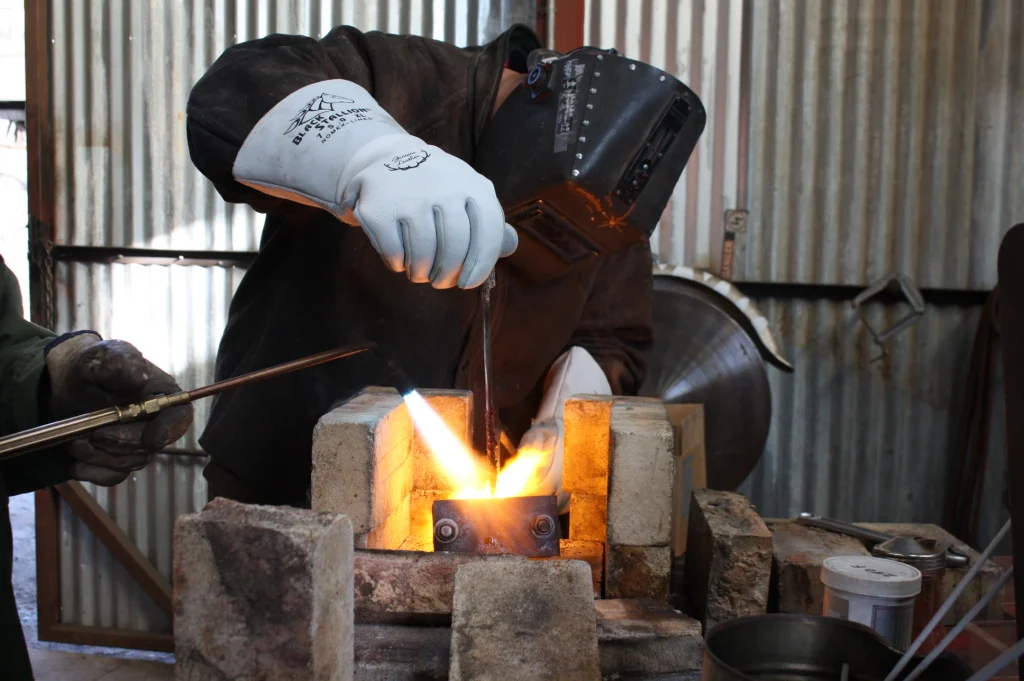
Pre-heating also helps to reduce the risk of hydrogen embrittlement, which can cause cracking along the weld line. It is important to maintain the pre-heat temperature throughout the welding process, and weld as soon as you reach the desired temperature. You can check the temperature with temperature sticks or infrared digital thermometer.
Technique for Successful TIG Welding Cast Iron
When TIG welding cast iron, it is important to maintain a consistent arc length throughout the weld. To avoid heat build-up, travel as fast as possible without creating any defects from it. In addition, it will help if you use short beads. Typically, for cast iron thinner than ¼”, you should weld a 1” bead. For thicker materials, you can go up to 3”, but not longer than that. To reduce the cracking risk, you don’t place each bead right next to the other. Instead, you spread them along the joint to spread out the heat.
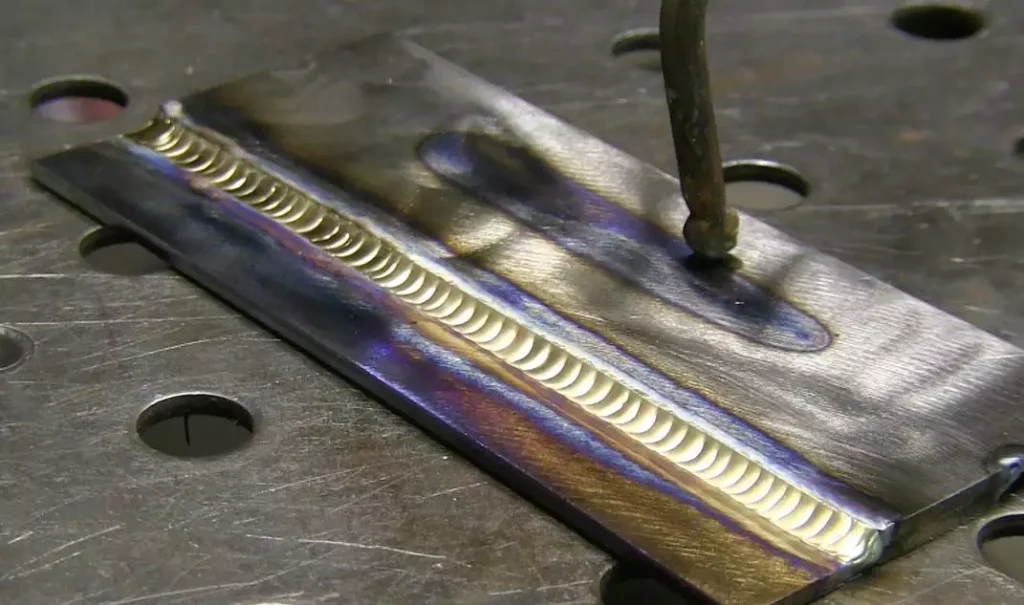
Keeping focused on heat affected zone is crucial to avoid defects when welding brittle metals such as cast iron. You can achieve it by preparing your tungsten and using features such as pulse. In addition, you should weave with your TIG torch. Instead, keep things as simple as possible. If cracks appear during the welding, and yes, there are high chances, you should drill holes on both ends to stop it from expanding.
Post Weld Treatment
After the welding process is complete, you must let the cast iron cool slowly to avoid cracking due to thermal shock. This can be done by allowing the cast iron to cool down to room temperature on its own at the rate of 50 F per hour. If any cracks are found, they must be repaired before any further welding can take place.
To ensure that the weld has the necessary strength, it is important to perform a stress-relief heat treatment. This process involves heating up the cast iron to a certain and even temperature for a specific period of time in order to reduce the residual stresses in the material. The exact temperature and time needed for the stress relief heat treatment will depend on the type of cast iron being welded and should be determined by consulting the manufacturer’s specifications.
TIG Welding Cast Iron Without Preheating
TIG welding without preheating can be beneficial in situations where the cast iron is too thick to be preheated, where the preheating process would take too long to heat entire casting, in simple pieces or when you don’t have the right tools for preheating. In these cases, welding without preheating would be the only option.
When TIG welding without preheating, you should pay a lot of attention to heat control. The important step is to leave each bead to cool before welding the next one.
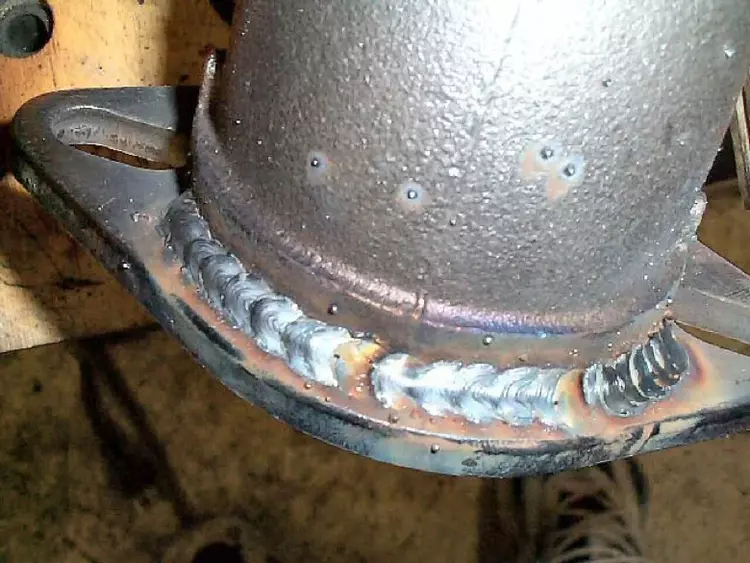
Nonetheless, no preheating will always make the weld weaker and more prone to cracking in the future. To try and do it successfully, use high-content nickel rods, low amperage with possible pulse, and up to 1” long beads.
Keep in mind that there are alternatives such as TIG brazing or braze welding, that offer more limited control, which is essential during cast iron welding. Even though it is possible, try not to use mild steel rods during cold welding, as it may result in failure.
Conclusion
TIG welding cast iron is a challenging but rewarding task, similar to Manual Metal Arc Welding. With the right preparation and technique, welding cast steel or iron can be completed successfully. Using the right filler material, preheating the area, and avoiding excessive heat input are all important when TIG welding cast iron.
It is also important to select appropriate parameters and consumables and to use the correct shielding gas. With the right tools and knowledge, TIG welding cast iron pieces or cast iron stove, can be accomplished with great results. With the right approach, this task can be completed successfully with the help of the sources provided.
Resources
- https://www.twi-global.com/technical-knowledge/faqs/can-you-weld-cast-iron
- https://www.weldpundit.com/tig-weld-cast-iron/
- https://www.r-techwelding.co.uk/welding-cast-iron/
- https://forum.millerwelds.com/forum/welding-discussions/30008-tig-welding-cast-iron
- https://www.motortrend.com/how-to/syncrowave-210-miller-electric-shows-how-to-tig-weld-cast-aluminium/
- https://www.weldingtipsandtricks.com/tig-welding-cast-iron-vise.html
- https://weldtalk.hobartwelders.com/forum/equipment-talk/general-welding-questions/29584-which-rod-for-welding-mild-steel-to-cast-iron





